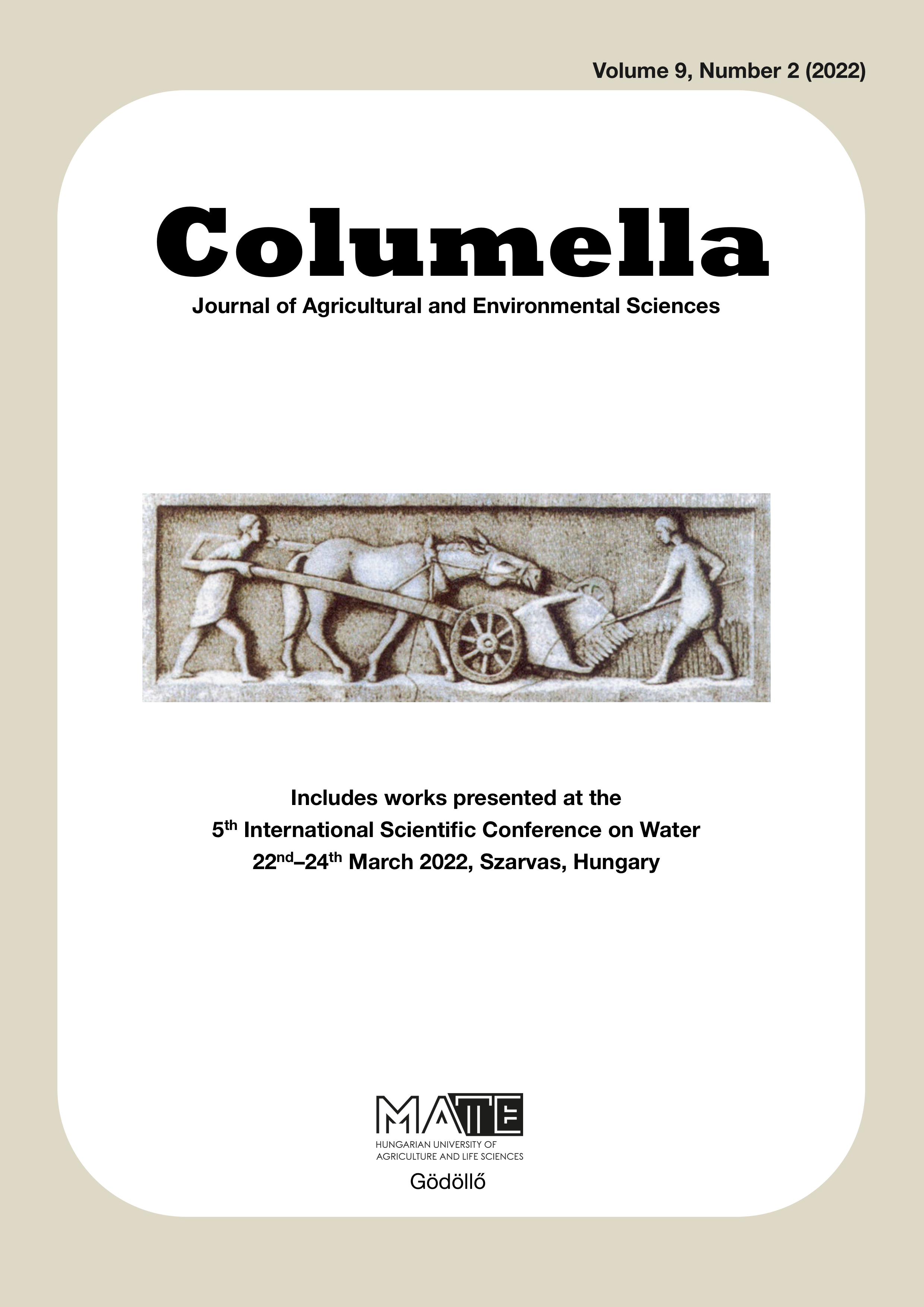Comparative experiment of various irrigation technologies in maize (Zea mays L.)
DOI:
https://doi.org/10.18380/SZIE.COLUM.2022.9.2.177Keywords:
maize, irrigation, yield, tape drip, leaf areaAbstract
Development of domestic maize cultivation largely depends on the applied agrotechnics. In keeping the increase in crop increases, the goal is to minimize crop fluctuations, and there is also an important role in the proper water supply. In our country, the yield of maize is a good water supply. The yield of maize can be significantly increased by improving the water supply of the plant. In many areas there are only very few water available for professional irrigation, so it is increasingly need to focus on modern, most water-saving irrigation technologies. In our experiment, we compare two irrigation techniques. The rain-like watering with console and the solenoid valve-controlled tape drip irrigation. Our examinations extend to mapping the properties of maize that can cause changes in the effect of irrigation and, of course, to develop crop quantities available by various irrigation technologies, since these results provide the proper income for the producer. The research was carried in Szarvas, at the school experimental field of the Hungarian University of Agriculture and Life Sciences, Department of Irrigation and Melioration, in 2020.
References
Ahmad, I., Ahmad, S., Kamran, M., Yang, X., Hou, F., Yang, B., . . . Han, Q. (2021). Uniconazole and nitrogen fertilization trigger photosynthesis and chlorophyll fluorescence, and delay leaf senescence in maize at a high population density. Photosynthetica 59(1), 192-202. doi: https://.doi.org/10.32615/ps.2021.011
Ahmad, I., Ahmad, S., Yang, X., Meng, X., Yang, B., Liu, T., & Han, Q. F. (2021). Effect of uniconazole and nitrogen level on lodging resistance and yield potential of maize under medium and high plant density. Plant Biology 23(3), 485-496. doi: https://doi.org/10.1111/plb.13235
Ali, S., Ma, X., Jia, Q., Ahmad, I., Ahmad, S., Sha, Z., . . . Jia, Z. (2019). Supplemental irrigation strategy for improving grain filling, economic return, and production in winter wheat under the ridge and furrow rainwater harvesting system. Agricultural Water Management 226(1), 105842. doi: https://doi.org/10.1016/j.agwat.2019.105842
Antal, J. (Ed.). (2005). Növénytermesztéstan 1., A növénytermesztés alapjai. Budapest: Mezőgazda Kiadó.
Futó, Z. (2003). A levélterület hatása a kukorica terméseredményére trágyázási kísérletben. Növénytermelés 52(3-4), 317-328.
Futó, Z., & Sárvári, M. (2015). A kukoricatermesztés technológiájának fejlesztési lehetőségei. Gödöllő: Szent István Egyetemi kiadó.
Meng, X., Guo, Z., Yang, X., Su, W., Li, Z., Wu, X., . . . Han, Q. (2021). Straw incorporation helps inhibit nitrogen leaching in maize season to increase yield and efficiency in the Loess Plateau of China. Soil and Tillage Research 211(1), 105006. doi: https://doi.org/10.1016/j.still.2021.105006
Menyhért, Z. (Ed.). (1979). Kukoricáról a termelőknek. Budapest: Mezőgazdasági Kiadó.
Nyíri, L. (Ed.). (1997). Az aszálykárok mérséklése. Budapest: Mezőgazda Kiadó.
Pálfai, I. (2004). Belvizek és aszályok Magyarországon. Budapest: Közlekedési Dokumentációs Kft.
Xu, Y., Wang, Y., Ma, X., Liu, X., Zhang, P., Cai, T., & Jia, Z. (2020). Ridge-furrow mulching system and supplementary irrigation can reduce the greenhouse gas emission intensity. Science of The Total Environment 717(1), 137262. doi: https://doi.org/10.1016/j.scitotenv.2020.137262
Downloads
Published
Issue
Section
License
Copyright (c) 2022 Gábor Bencze, Ádám Komlósi, Zoltán Futó

This work is licensed under a Creative Commons Attribution-NonCommercial-NoDerivatives 4.0 International License.






